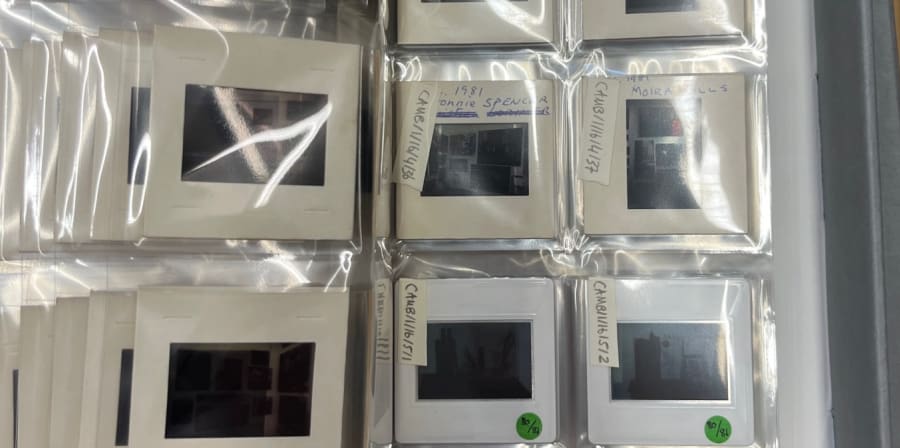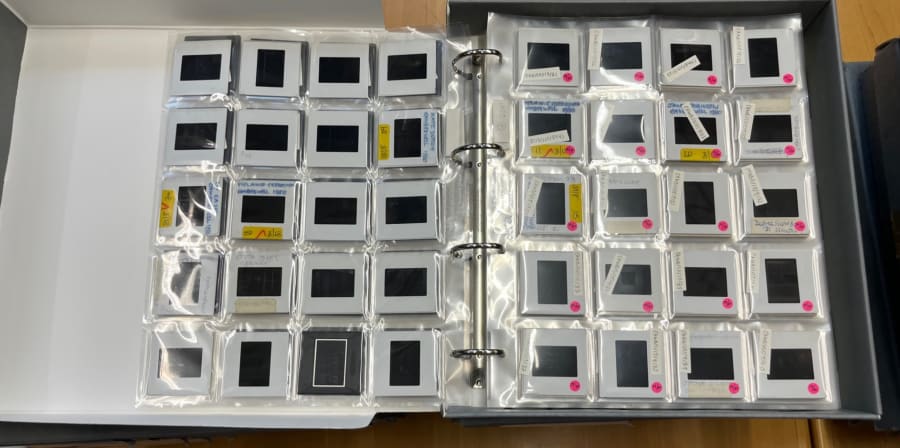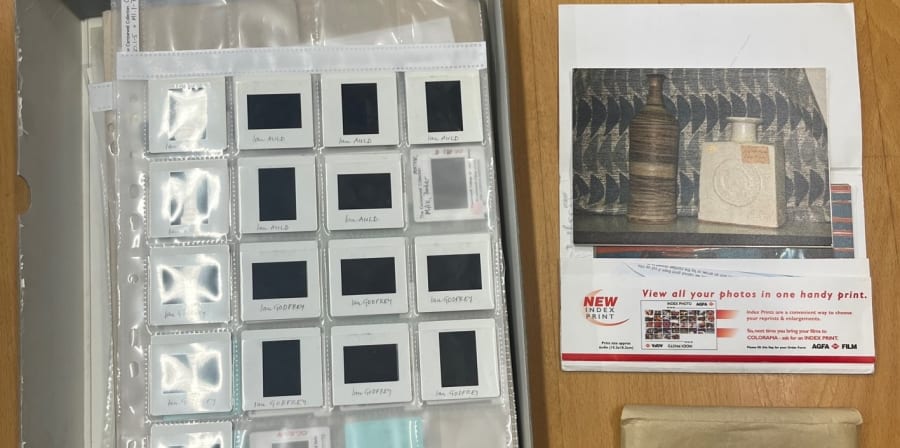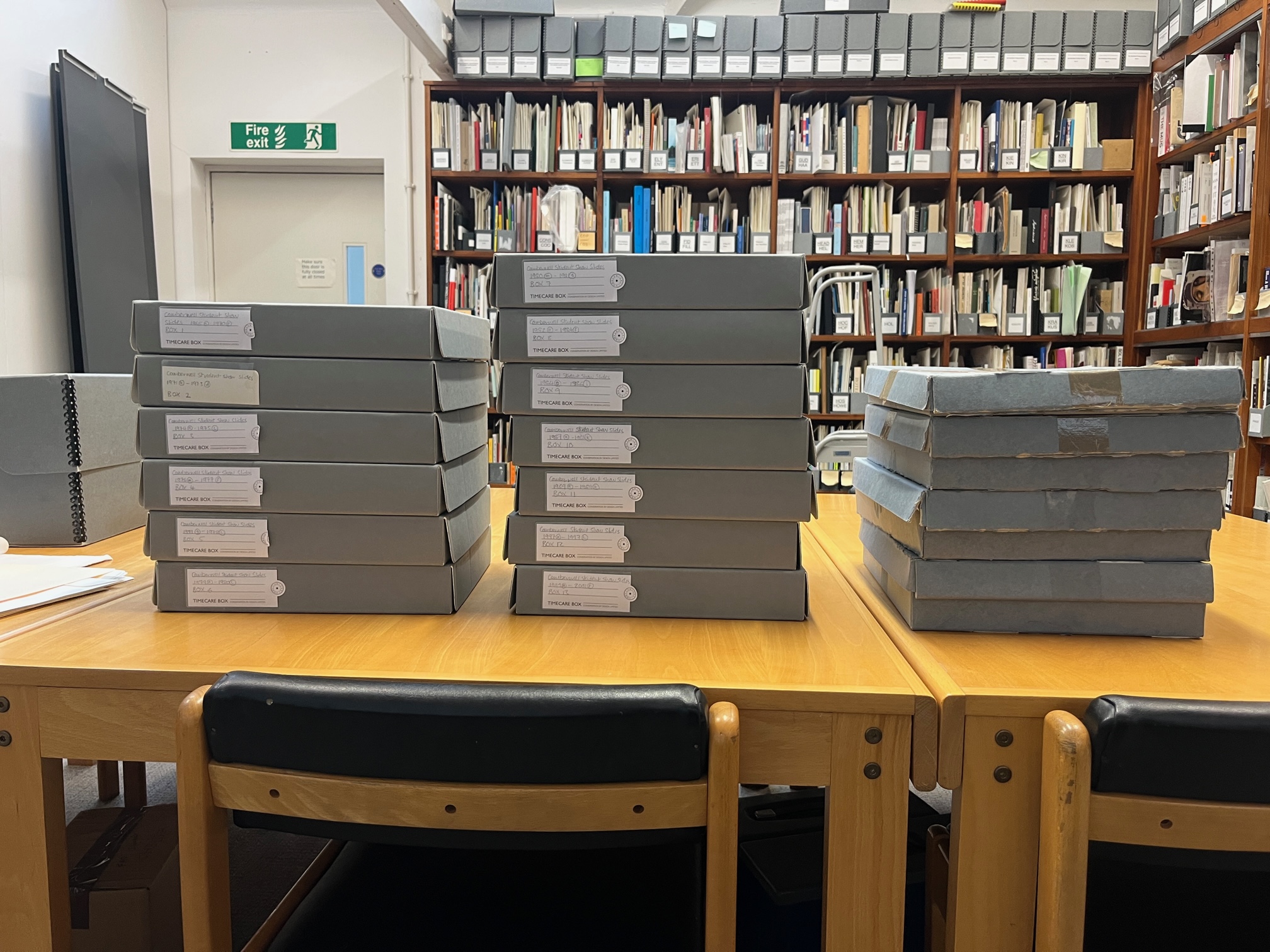
My name is Madeleine, I am an Assistant Archivist, cataloguing for the Archives and Special Collections Centre (ASCC), but working onsite at Chelsea. I have recently completed my second cataloguing project as my contract at ASCC comes to a close. I previously wrote a blog about my project cataloguing the Chelsea Slides Collection.
After completing the Chelsea Slides, I started cataloguing the Camberwell Slides Collection straight away. It was very like to the previous project, however, the slides were not yet listed (a scoping activity that records the extent of a collection before formal cataloguing has been undertaken). They had not been digitised yet, either.
Listing
My first aim was to get all the slides listed and capture comprehensive detail to aid my cataloguing work. This will eventually help future digitisers, too.
To begin listing, it was necessary to first create a reference number system for the collection. I wrote each number on a small slip of acid-free paper in 2B pencil and placed them in each slide holder. This will help the digitiser follow the spreadsheet and accurately locate individual slides.

Cataloguing
Next, I drafted a meticulous spreadsheet that included the 6 mandatory fields for cataloguing according to ISAD(G) (an international cataloguing standard used by archivists) which are Reference Code, Title, Name of Creator, Date, Extent and Level of Description.
In addition to these fields, I included box number, folder number, course title, annotations, mount type, description, condition/ digitisation notes and archivist notes. This may seem like a very granular process, but it is important to record all information about each slide for future reference and to allow the digitisers to plan their work.
Once my spreadsheet was finished, I began migrating the records in to CALM (the cataloguing software used at the ASCC). I created an arrangement grouping by Year, then Course, then describing to Item level. While I did a great deal of cataloguing during my first project, as these slides have yet to be digitised it wasn’t possible to provide very detailed descriptions.
Problem Solving
I focused on capturing all the rich information taken from annotations on the slides. This process is relatively straightforward. However, because the only information I can work from is the slides themselves this also involves problem solving. This can include matching up names and courses, as well as identifying misspellings and tackling some illegible handwriting.

New Discoveries
Unlike the Chelsea project which mainly contains slides documenting degree shows, the Camberwell slides contained a wider variety of student shows. These included external shows at places like the (now defunct club) Fridge in Brixton and at the South London Gallery in Camberwell. This gives us a fascinating look at student activity between 1965 and 2001. When they are digitised, they will provide a valuable research tool for alumni and current students alike.
As I completed the project with some time to spare, I have been able to conduct additional listing for another four miscellaneous boxes that were with the thirteen boxes from the Camberwell Slides Collection. These four boxes were outside of the scope of the original project brief. However, they contained some valuable slides from a number of courses at Camberwell, the original Camberwell Slide Library and from ILEA teaching collections.
Whilst I’m sad my time working at the ASCC is coming to an end, I am very content with my work here and feel enthusiastic that the cataloguing work I have completed will be a valuable tool for students and the general public alike.
Questions?
If you have any questions about accessing the Camberwell Slides Collection, please contact us at archive-enquiries@arts.ac.uk.

